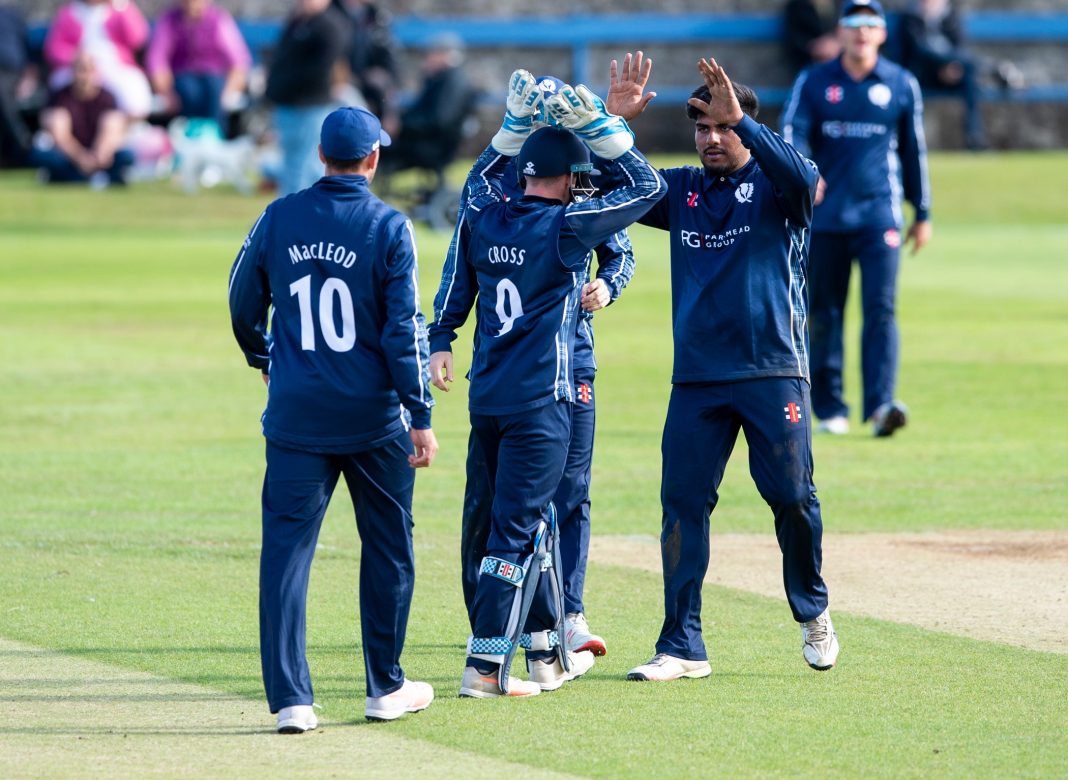
“All Scotland need now is a bit more recognition and a pro-European plan with its emerging counterparts in Netherlands and Ireland.”
In a recent Emerging Cricket podcast, author of The Secret Game: Tales of Scottish Cricket, Jake Perry, pointed out that performance-wise, Scotland’s cricket teams are the best sports teams in the country. With 17,000 grassroots players, cricket is second only to football, and ahead of Rugby Union, as the second most widely played sport nationally.
A bit like the middle child in a family, Cricket Scotland is never quite the centre of attention at home.
In fact, the culture and sport section of the Brand Scotland website — a collective that includes the Scottish Government, VisitScotland and the international arm of Scottish Enterprise — fails to acknowledge Scotland’s 250 years of cricket history, never mind the sustained success of Cricket Scotland at a grassroots and national level.
So how can one of the strongest associate nations get the national recognition they deserve, and grow into a mainstream sport?

Find a bit of luck, would ye?
To describe the current Scottish side as successful is by no means based solely upon its famous victory over England in 2018. And while the upset was celebrated in many bars across Scotland, it was no aberration.
That they didn’t qualify for the 2019 World Cup was cruel. They were but two unfortunate umpiring decisions and an unlucky rain break away from qualifying for the 2019 World Cup undefeated, never mind missing out on qualification altogether.
As they moved on from this trauma, results in 2019 were up and down — including defeats to Singapore, Oman and the USA — but destiny is still very much in their own hands in terms of progressing from the ICC Men’s Cricket World Cup League 2, to the 2022 World Cup Qualifier.
The weather gods conspired against them once again last summer, undermining manful attempts to overcome Afghanistan and Sri Lanka, where they may well have won at least one of these games had a full allotment of overs been played.
The marquee event of 2020 — should it go ahead — is undoubtedly the T20 World Cup, where Scotland has more than enough might, especially in the batting department, to finish in the top two in Group B against a Shakib Al Hasan-less Bangladesh, Namibia, and Netherlands to join the Super 12.
With many of the team also performing in county cricket (Adrian Neill and Ruaidhri Smith), franchise T20 leagues (Kyle Coetzer, Safyaan Sharif, Callum Macleod, George Munsey) and with the likes of Gavin Main, Hamza Tahir, Brad Wheal and Tom Sole coming through, they have sufficient talent pressing for places to be a force for years to come.
Professionalise women’s cricket
As women’s cricket has only recently begun to turn professional around the world, there is an opportunity for Cricket Scotland to follow suit. The pathways for Scottish girls to the national team is clearly laid out and impressive, even if the pace towards professionalism is not as fast as in other nations.
This pace has seen them lose international standard cricketers in Kirstie Gordon and Leigh Kasperek to England and New Zealand respectively — a not insignificant problem — but their very development is a testament to the success of the strong foundations at grassroots and talent coming through the system.
Commercial risks being considered, the professionalism of women’s cricket will arrest a talent drain and provide a greater chance for the women’s team to shine in global tournaments, thereby grabbing the national spotlight.
Get cricket in schools
It’s great that Scotland is lobbying to force cricket onto the school curriculum. By adopting the ECB’s All Stars and Dynamos cricket programs they have a colourful cricket product with adaptable formats that can bolster the youth setups in local clubs and encourage cricket to be played in multiple settings, including playgrounds, backyards and untapped pockets across Scotland.
Generate sponsorship
COVID-19 means that Scotland — and many other boards and grassroots clubs — face precarious financial futures. That Cricket Scotland’s finances have hitherto been solid means they should be in good hands through this period. It’s also here where the likes of Brand Scotland can give them a lift by recognising and supporting cricket more proudly.
Learn from your sporting brothers
Along with Ireland and the Netherlands, Cricket Scotland could replicate Rugby’s Pro14, where the top teams from Ireland, Italy, Scotland, Wales, and South Africa compete in a quasi-domestic league.
If Scotland sees their future as an ICC full member, their players can only feature in county cricket as overseas players. Ireland recently lost Tim Murtagh, while others have been forced to give up lucrative county deals to pursue international honours.
Scotland and Ireland both have three inter-provincial teams, while the Netherlands could surely create a few sides from the cream of the Topklasse competition to create multi-team top-level domestic structure competing across formats. With the growth of fantasy cricket apps and cricket streaming, this could be a commercially viable venture that allows the three boards to tap into new audiences, unlike a high overhead IPL copycat league like the cancelled Euro T20 Slam.
Other benefits might be that it is replicable in the women’s game where there is a smaller network of teams, attractive to local players and sponsors, and be a sustainable means for upcoming talent to be tested in the years after Scotland has become an ICC full member.
Perhaps this way the middle child of Scottish sport can escape the shackles of its siblings and enjoy its rightful space as Scotland’s signature summer sport.
Keep up with Scotland’s progress and the emerging game through our Facebook and Twitter pages.
Looking for audio content on the emerging game? Add the Emerging Cricket Podcast to your favourites on Apple, Spotify and Podbean.
Want extra Emerging Cricket content? Contribute to the Emerging Cricket Patreon cause from as little as $2 a month. Sign up here!






